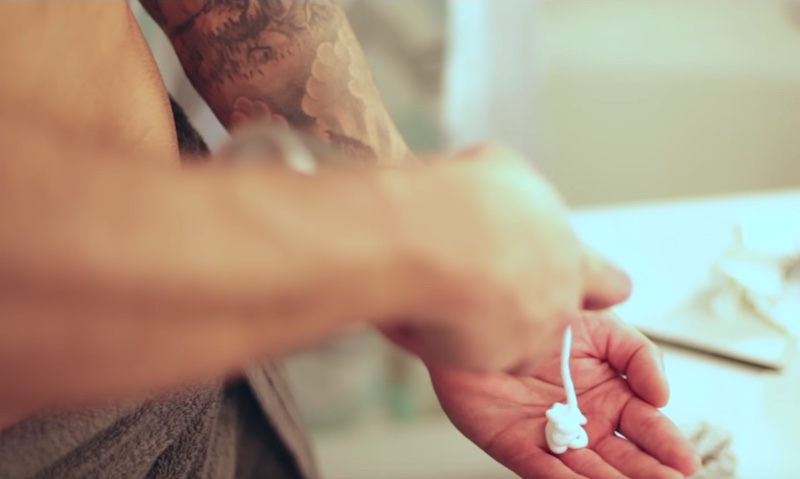What happens when you stop taking Propecia or Rogaine?

As of 2017, finasteride and minoxidil are the two FDA approved hair loss treatments. Money, side effects, and efficacy are all concerns for users. You also have to commit to using both options for the rest of your life if you want to keep reaping the rewards. If you stop using these medications, sooner rather than later your hair loss will return!
“What is DHT and how does it impact hair loss?” If you’ve experienced male or female pattern baldness then you likely know the answer to this question because DHT is the culprit behind your falling follicles. DHT is dihydrotestosterone, which is what you get when the male sex hormone testosterone is exposed to the enzyme Type II 5-alpha reductase. When this occurs in the scalps of people who have a genetic predisposition toward baldness, then hair loss is the inevitable outcome. If, like many, you thought, “If only there was a way to get DHT out of your hair,” then congratulations: that’s the idea behind finasteride!
Propecia
Sold under popular brand names such as Propecia and Proscar, finasteride works by lowering the amount of DHT in your scalp. The most common side effects affect sexual function and include erectile dysfunction, decreased libido, and lowered sperm count.
There’s a point of no return when it comes to finasteride, meaning that if you’ve lost too much hair then finasteride simply won’t work for you. Finasteride also won’t help you with anything other than male pattern baldness. That means that for many people, finasteride just isn’t an option! Then there’s the shedding.
WAIT, WHAT?! That’s right, shedding. Shedding is a normal part of the hair loss process, and, as a result, is not listed as a side effect. It’s common knowledge among users of finasteride that increased shedding will occur, and Keeps, Hims, and Roman a popular distributor of finasteride, doesn’t even try to spin increased shedding. The company just suggests you ride the period of increased shedding out since it’s temporary and doesn’t mean the product isn’t working.
Rogaine
Alternatively, there’s minoxidil. Minoxidil is the go-to product for those who prefer that their hair loss cure be a less effective mysterious foam that has to be applied twice a day. Popularly sold under the brand name Rogaine, minoxidil was originally developed to be used in the treatment of high blood pressure. Soon, however, it was discovered that hair growth was a side effect. What was not discovered, however, was how exactly minoxidil works– or the perfect system for massaging hair product into your scalp twice a day and then keeping your hair from getting wet for four hours afterward BOTH TIMES. Good luck!
The clinical study that led to minoxidil’s FDA approval in 1987 said that 40% of men experienced moderate to dense hair growth. Side effects include itching or irritation in the eyes or the treated area, headaches, mood swings, and unwanted hair growth around the body. The product isn’t meant to be used on the front of the scalp, where many people experience hair loss. Additionally, hair growth has been reported as uneven by some, requiring special care to achieve a pleasing look. And, like with finasteride, minoxidil will not work once you’ve lost too much hair.
In their FAQs, Rogaine explains that hair loss will resume and your regrown hairs will be gone within 3 to 4 months. Keeps, meanwhile, reports that within seven days of ending your usage of their product that your hair loss will return. Currently, Rogaine sells its product for $27.49 a bottle online, while Keeps sells Finasteride for $25 a month. So, if you can commit to using these products for the rest of your life, don’t experience any side effects, can afford to use one the other or both, don’t have severe androgenetic alopecia, and start early, then finasteride and minoxidil might be for you!
Scalp Micropigmentation vs. Propecia & Rogaine
For everyone who can’t use finasteride and minoxidil, and for those who anticipate that it’ll be hard to stick to these products or have experienced too much hair loss already, then scalp micropigmentation is for you! A cosmetic scalp tattoo that leaves you looking like you just got a fresh buzz cut. What happens when you stop scalp micropigmentation? Well, since it only takes three sessions max to get scalp micropigmentation, what happens after you stop is that you reap the rewards of scalp micropigmentation for life! Learn more about scalp micropigmentation vs. Rogaine and Propecia HERE!
Suggested Articles:
Scalp Micropigmentation vs Hair Fibers, Rogaine, and Propecia

Tired of hair loss?
Get the perfect hairline, 100% guaranteed, with our scalp
micropigmentation treatment that is customized just for you. No more
crazy combovers. No more ineffective medications. Just results.